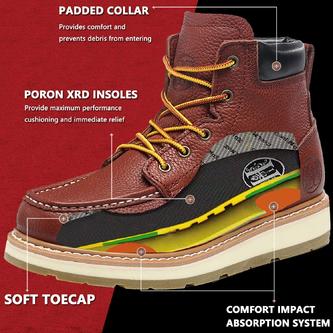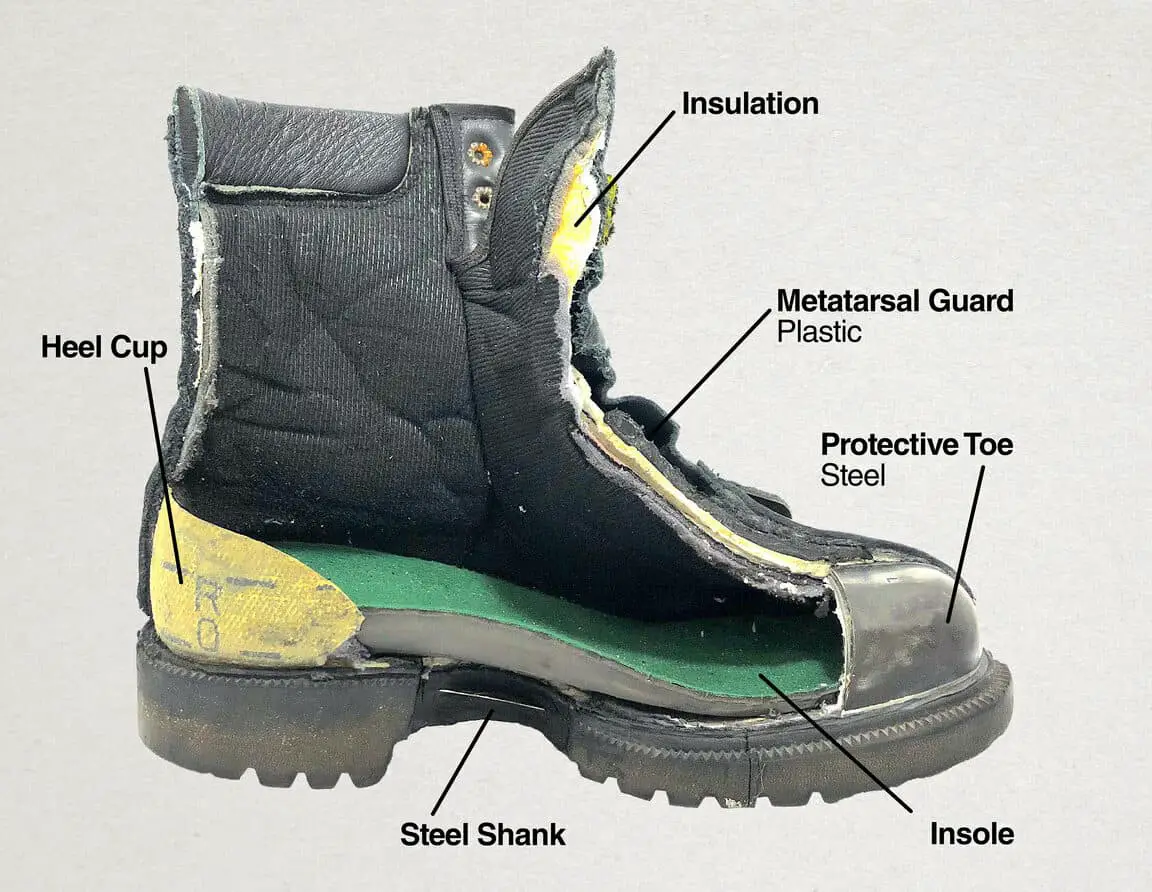Understanding the Importance of Toe Protection
When it comes to workplace safety, toe protection is a crucial aspect to consider. Toe injuries can be severe and even debilitating, resulting in lost productivity, increased medical costs, and potential long-term disability. In fact, according to the Bureau of Labor Statistics, toe injuries account for a significant percentage of workplace injuries, with many of these injuries being preventable with the right footwear. This is why selecting the right type of toe protection for your job requirements is essential. Whether you’re working in construction, manufacturing, or outdoor environments, understanding the differences between comp toe vs soft toe work boots can help you make an informed decision about your safety. By choosing the right type of toe protection, you can significantly reduce the risk of toe injuries and ensure a safer working environment.
What is a Composite Toe and How Does it Compare to Soft Toe?
When it comes to work boots, understanding the difference between composite toe and soft toe is crucial. Composite toe work boots feature a toe cap made from non-metallic materials, such as carbon fiber, Kevlar, or plastic. These materials provide excellent impact resistance and are often lighter in weight compared to traditional steel toe boots. In contrast, soft toe work boots do not have a protective toe cap, making them more suitable for jobs that do not require toe protection. The key benefits of composite toe work boots include their lightweight design, flexibility, and resistance to corrosion and extreme temperatures. On the other hand, soft toe work boots offer comfort, flexibility, and affordability, making them a popular choice for certain job types. When deciding between comp toe vs soft toe work boots, it’s essential to consider the specific hazards and requirements of your job to ensure you’re getting the right level of protection.
How to Select the Right Toe Protection for Your Job
Selecting the right type of toe protection for your job requires careful consideration of the specific hazards and requirements of your work environment. When choosing between comp toe vs soft toe work boots, it’s essential to evaluate the level of impact resistance, compression resistance, and electrical hazard protection needed. For example, workers in construction or manufacturing may require composite toe work boots that meet ASTM standards for impact resistance, while those in outdoor work or warehousing may prefer soft toe work boots that offer flexibility and comfort. Additionally, workers in industries such as electrical or telecommunications may require work boots with electrical hazard protection to prevent shock or electrocution. By understanding the specific hazards and requirements of your job, you can make an informed decision about the right type of toe protection for your work boots.
The Benefits of Composite Toe Work Boots
Composite toe work boots offer several advantages that make them a popular choice among workers in various industries. One of the primary benefits is their lightweight design, which reduces fatigue and discomfort during long hours of work. Additionally, composite toe work boots are often more flexible than traditional steel toe boots, allowing for a greater range of motion and improved mobility. Another significant advantage is their resistance to corrosion and extreme temperatures, making them ideal for workers in harsh environments. Furthermore, composite toe work boots are often more breathable and moisture-wicking, reducing the risk of foot sweat and discomfort. When considering comp toe vs soft toe work boots, the benefits of composite toe work boots make them an attractive option for workers who require a high level of protection and comfort. By choosing composite toe work boots, workers can enjoy improved performance, comfort, and safety on the job.
The Advantages of Soft Toe Work Boots
Soft toe work boots offer several benefits that make them a popular choice among workers in certain industries. One of the primary advantages is their comfort and flexibility, which allows for a greater range of motion and reduced fatigue. Soft toe work boots are also often more affordable than composite toe work boots, making them a cost-effective option for workers who don’t require a high level of impact resistance. Additionally, soft toe work boots are often preferred by workers in jobs that require frequent bending or kneeling, as they provide greater flexibility and comfort in these positions. When considering comp toe vs soft toe work boots, soft toe work boots are a suitable option for workers in industries such as warehousing, delivery, or general labor, where the risk of toe injury is lower. By choosing soft toe work boots, workers can enjoy improved comfort, flexibility, and affordability, while still maintaining a level of protection and safety on the job.
Real-World Examples: Composite Toe vs Soft Toe Work Boots
In the real world, the choice between composite toe and soft toe work boots often depends on the specific job requirements and industry. For example, in the construction industry, composite toe work boots are often preferred due to their high level of impact resistance and protection against heavy objects and tools. In contrast, soft toe work boots may be more suitable for workers in the warehousing or delivery industries, where the risk of toe injury is lower and comfort and flexibility are more important. In outdoor work, such as landscaping or forestry, composite toe work boots may be preferred due to their resistance to corrosion and extreme temperatures. When considering comp toe vs soft toe work boots, it’s essential to consider the specific hazards and requirements of your job. By doing so, you can choose the right type of toe protection for your needs, ensuring a safe and comfortable working experience. For instance, a construction worker may require a composite toe work boot with a high level of impact resistance, while a warehouse worker may prefer a soft toe work boot with greater flexibility and comfort.
What to Look for When Buying Work Boots with Toe Protection
When purchasing work boots with toe protection, there are several key factors to consider to ensure you’re getting the right pair for your job requirements. First and foremost, look for high-quality materials and construction that can withstand the demands of your work environment. Durability is crucial, as a pair of work boots that can’t withstand the rigors of your job can leave your toes vulnerable to injury. Additionally, consider the certification of the work boots, such as ASTM or CSA certification, which ensures that the boots meet certain safety standards. When comparing comp toe vs soft toe work boots, consider the level of impact resistance, compression resistance, and electrical hazard protection you need for your job. It’s also essential to consider the comfort and fit of the boots, as a pair that’s uncomfortable or doesn’t fit properly can be a distraction on the job. Finally, research the manufacturer’s reputation and read reviews from other customers to get a sense of the boots’ performance and reliability. By considering these factors, you can make an informed decision and choose the right work boots with toe protection for your needs.
Conclusion: Making an Informed Decision
In conclusion, selecting the right type of toe protection for your work boots is a crucial decision that can have a significant impact on your safety and comfort on the job. By understanding the differences between composite toe and soft toe work boots, and considering factors such as job requirements, impact resistance, and certification, you can make an informed decision that meets your needs. Whether you’re working in construction, manufacturing, or outdoor work, the right pair of work boots with toe protection can provide peace of mind and protection from toe injuries. Remember to weigh the benefits of comp toe vs soft toe work boots and consider your specific job requirements to choose the right type of toe protection for your needs. By doing so, you can ensure a safe and comfortable working experience.








